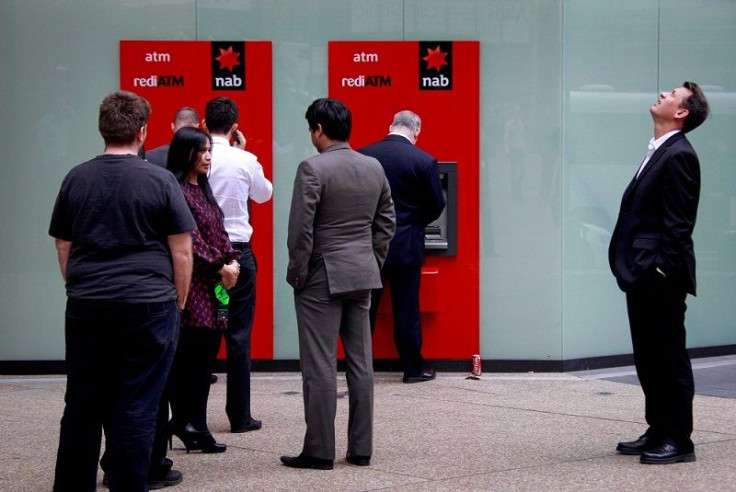Australian banks earn extra $1.4 billion by keeping half of RBA interest rate cut
Bank economists foresee key lending rate dropping further to 1.25% in November

Australian banks are again being accused of being greedy for not passing to customers in full the interest rate cut the Reserve Bank of Australia (RBA) made on Tuesday. By keeping about half of the 25 basis points key lending rate reduction, the banks stand to earn an extra $1.4 billion.
This is not the first time that banks had not passed the rate cut in full. Adelaide Now identifies National Australia Bank (NAB) as the one that kept the most by reducing its standard variable rate (SVR) by only 0.1 percentage points and keeping 0.15 percentage points.
ANZ would keep 0.13 percent and pass on 0.12 percent, while Commonwealth Bank of Australia (CBA) would keep 0.12 percent and pass on 0.13 percent and Westpac retain 0.11 percent and pass on 0.14 percent. Although with the new rates, CBA would have the lowest rate among the big four at 5.22 percent, RateCity, a comparison website, estimates CBA would earn an extra $475 million a year, Westpac would add $350 million more, NAB would benefit by $300 million and ANZ $265 million.
But Bank Australia, a small lender, passed in full the rate cut, bringing down it SVR rate to 4.74 percent. However, Treasurer Scott Morrison defends the banks, saying it is their right not to pass in full the rate cut since the lenders have increased their deposit rates.
Had the banks passed in full the interest rate cut, a borrower with a 30-year $300,000 home loan paying 4.46 percent interest rate, which is the average SVR, would have reduced his monthly payments by $45 to $1,512. Otto Dargan, managing director of Homeloanexperts.com.au, encouraged borrowers to look around for better deals especially if the banks kept a portion of the rate cut, particularly those with loans that are at least over two years old.
Unless a legislation authored by Senator Nick Xenophon, placing the burden on banks to explain why it refuse to pass the rate reductions in full, would become law, Aussie banks stand to earn more windfall. Xenophon says, “The banks are playing scrooge – if only they were as quick to act when interest rates go down as they are when it goes up.”
Shane Oliver, chief economist of AMP Capital, expects a third RBA rate cut in 2016 in November which would likely result in the Australian central bank breaking record and setting another historic low interest rate of 1.25 percent. “The RBA will let the dust settle, but the risks of inflation are still on the downside,” Oliver predicts.
Alex Holmes, from Capital Economics, shares Oliver’s forecast. But Ray Attrill, global co-head of FX strategy, writes in a morning note that NAB believes the cash rate would remain unchanged for the rest of 2016 at 1.5 percent, reports the Australian Financial Review.
VIDEO: Economic Insights 2 Aug 16: RBA cuts cash rate to new record low of 1.5%
Source: CommSecTV





















